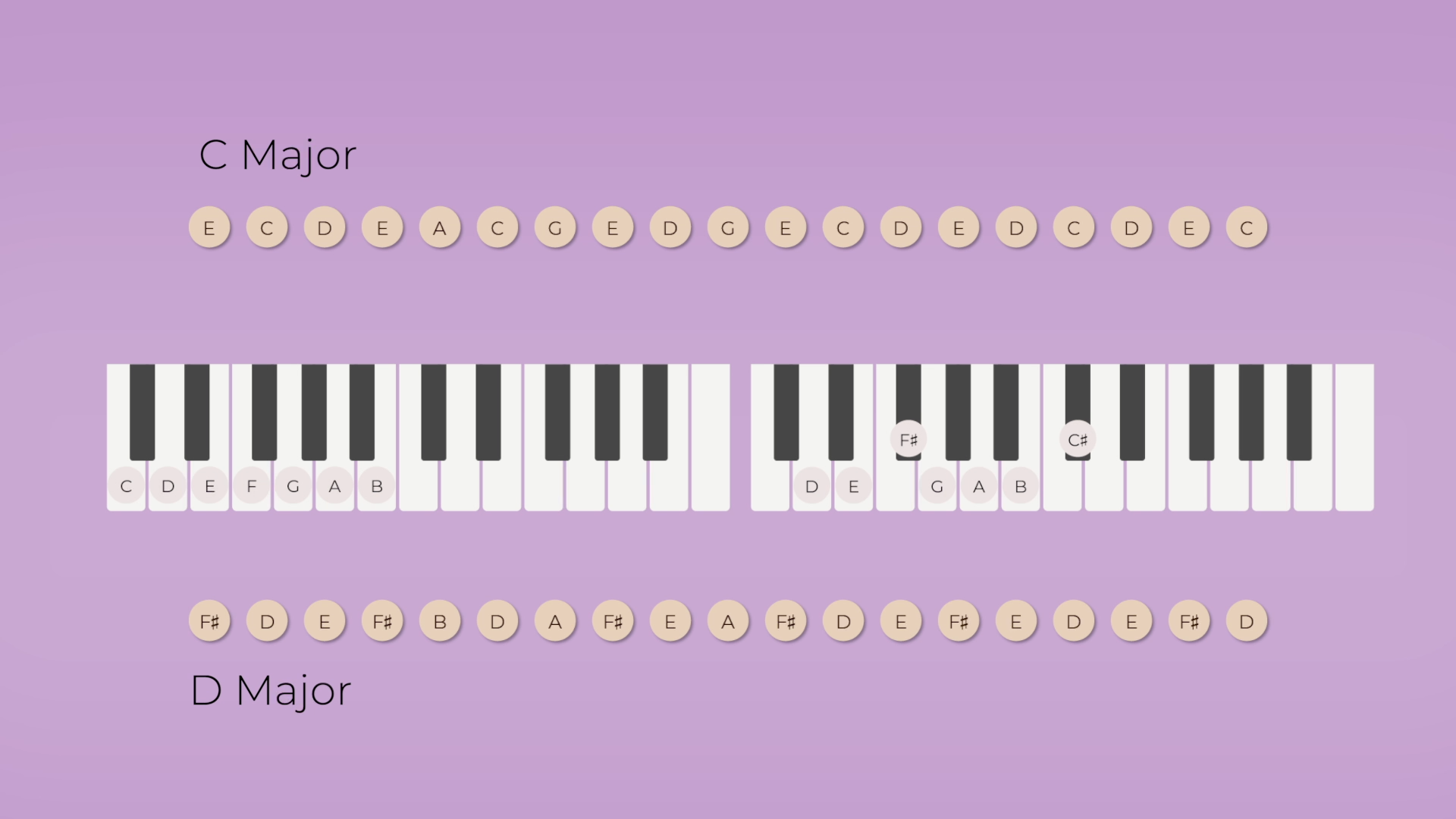
If you want to write your own songs or produce music, it’s essential to learn how great songs are built. While learning music theory as a beginner can seem intimidating at first, it’s actually quite simple to jump into.
When it comes to familiarizing yourself with music theory for beginners, all you need to understand are 7 notes. You can do that!
What is Music Theory?
Music theory is simply the study of how music works. It’s a collection of concepts that help musicians understand, analyze, and write music together.
There are many myths about music theory. If you see it only as a set of rules that dictate how to write music, it can feel limiting. But consider its true purpose: to give us the necessary tools to craft and understand great songs. In that case, it’s clear that learning music theory is worth the effort.
7 Notes in Music
Almost all music is made up of just 7 notes. In this post, we’re looking at those 7 notes as they relate to the major scale.
The major scale is a set of 7 notes that follow a specific pattern that humans happen to really love.
You’ll often see the major scale demonstrated in the key of C Major. This means that the pattern begins with the note C on the piano.

However, the major scale can actually be played starting with any note on the piano.
Check out how the major scale pattern is played, starting with any note, with our key cheat sheets.
Comparing a Song in C Major and D Major
Together, these seven notes can be used to create a full song in any key you like.
Let’s look at “Don’t Stop Believin’” by Journey in the key of C Major. Then, we will compare it in the key of D Major. Remember, the key simply tells us first note that the scale begins on in each version.
The songs are made up of different notes on the piano, and the second version sounds a bit higher. However, notice how the versions feel the same.
It turns out that comparing the versions by looking at the names of the notes doesn’t tell us very much. After all, who can tell at a glance that the melodies below are the same?

Although the actual notes on the piano change between the two versions, their positions in the scale stay the same. Below, each note’s position in the scale is notated using numbers 1 through 7.

The Essence of Music Theory
It turns out the name of a note and the key it’s in aren’t super important. These labels don’t tell us much about how a song will act or feel on its own.
Instead, we can learn a lot from looking at notes’ relative position in the scale. This allows us to study the relationship between notes in a scale and across songs, no matter what key they are in.
If you know these seven notes, you are well on your way to understanding music as a whole. It really is that simple!
Learn Music Theory With Hooktheory
At Hooktheory, we believe that identifying the 7 notes in music is so important that we’ve added colors to the typical relative notation.
Across our products and free resources, a red note will always be scale degree 1, an orange note will always be scale degree 2, and so forth.

Our colorful notation is featured in our books, songwriting editor, and song database.
Final Thoughts
As a beginner, all you need to start understanding music theory is an awareness of the 7 notes that make up all of music.
There’s a lot more we can dive into, but we’ll cover more topics in other posts. For now, check out our song database and pay attention to the scale degrees and colors. You’ll be comparing music instantly!



